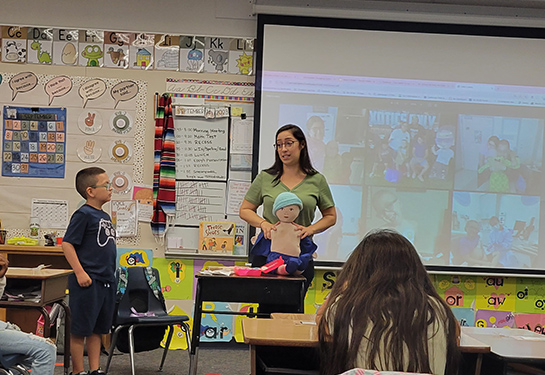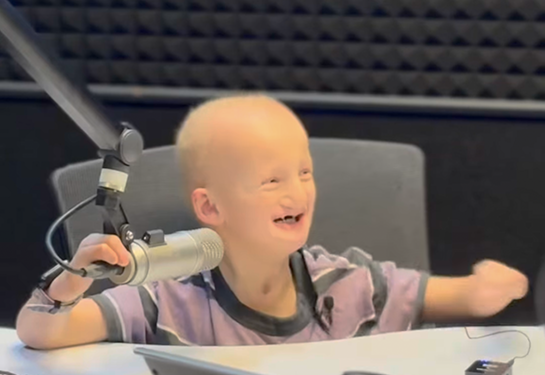Baby born with large hole in her heart healed, thanks to innovative procedure
Surgical and catheter-based intervention closes Redding baby's VSD
Redding resident Kacee Roberts was 13 weeks pregnant when an ultrasound detected a problem with her unborn baby.
Roberts was referred to UC Davis Health for additional testing. Jay Yeh, medical director of the UC Davis Pediatric Echocardiography Lab, discovered a large hole in her unborn baby’s heart.
The hole was located in the wall that separated two ventricles (or pumping chambers) of the baby’s heart. This condition is known as a ventricular septal defect (VSD).
The UC Davis Health team continued to monitor the fetus’s growth through routine obstetric ultrasounds and monthly fetal echocardiograms (echo), which are ultrasound tests that use sound waves to see the structure and function of the baby’s heart.
After baby Jadyn Burgess was born without complications, she was admitted to the UC Davis Neonatal Intensive Care Unit and received additional testing. The echo after birth confirmed the VSD was extremely large.
“It meant that a traditional approach to repair would require a large incision on the healthy heart muscle, leaving a significant scar and weakening the heart muscle,” Yeh said.
There had to be a better and safer way.
A pulmonary artery band provides temporary fix
Within her first week of life, Jadyn had her first surgery. A band was placed around her pulmonary artery to reduce the pressure and excess blood flow into her lungs.
“This surgical procedure allowed Jadyn to grow and develop normally for the first two years of life,” Yeh said. “From there, we planned a hybrid approach, involving surgical and catheter-based procedures.”
For this hybrid approach, the team needed Jadyn to be bigger in size to allow for the safe delivery of a single large VSD closure device. So they waited and monitored her growth.
“I could tell pretty early on that I was in good hands with UC Davis,” Roberts said. “Dr. Yeh really knows that as a parent, you are terrified and don’t know what’s going on. But I really appreciated the expertise and the care of the whole team, who really thought about what the best path would be for Jadyn to ensure she would get better.”
The solution - a hybrid procedure
When Jadyn was 20 months old, it was time.
Pediatric cardiothoracic surgeon Gary Raff surgically removed the pulmonary artery band. Then he made a small incision in the heart muscle to pass a small catheter into the heart and across the VSD. Through the catheter, cardiac interventionist Frank Ing used a plug-like device to close the VSD.
“This case really highlights the collaboration and multidisciplinary approach to our patients,” Ing said. “All of this was performed with ultrasound guidance and required a dedicated and experienced team of UC Davis doctors, nurses and technicians.”
Jadyn is now living like a normal 2 year old, with checkups every six months at the UC Davis Pediatric Heart Center.
“I couldn’t be more grateful to everyone -- the nurses, the NICU team, the heart team,” Roberts said. “Everyone took the best care of our daughter, and that really puts you at ease. It’s always hard as a parent. You have a lot of emotions. It’s comforting knowing there’s a team of people from UC Davis with your child’s best interests at heart.”




